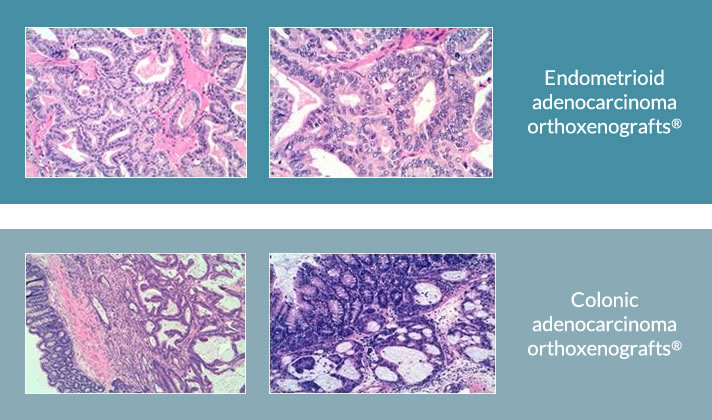Orthoxenografts®
Orthoxenografts® are experimental mouse models in which a small piece of human tumor is implanted (implantation from one species to another; xenograft) in the same organ of origin (orthotopically). Thus, we talk about ‘Orthotopic Patient-Derived Xenografts’ (PDXs). Xenopat has developed the know-how to implant tumors in a 24 hour window after the tumor removal process has occurred, with extremely high engraftment rates.

Orthoxenografts® are characterized by:
- Maintaining the histological, genetic and molecular characteristics of the original primary human tumor.
- Reproducing growth and dissemination patterns of the original tumor.
- Mimicking the drug response pattern of the original primary human tumor.
- Achieving the maximum correlation between in vivo preclinical studies and human clinical trials.
Thus, orthoxenografts® are the most advanced preclinical models available to develop new antineoplastic drugs.

Due to their characteristics, othoxenografts® are the best available tools for:
- Outsourcing the preclinical phases of drug development.
- Targeting Product Profile processes.
- Assisting Co-clinical studies (human/mice co-clinical trials), through the generation of orthoxenografts® derived from clinical trial participants.
Advanced Preclinical Services
Contact
Contact the Xenopat team today to learn more about our Personalized Cancer Treatment.